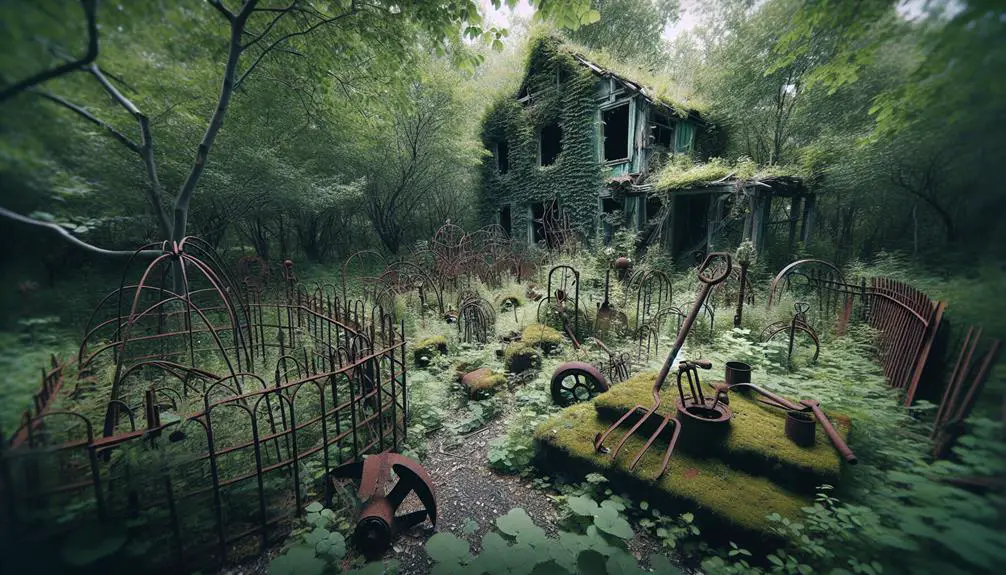Exploring failed US utopian experiments reveals intricate challenges in balancing individual liberties with collective goals. From New Harmony to Rajneeshpuram, clashes between personal ambitions and communal visions unraveled these societies. Lessons highlight the importance of adaptability, communication, and ethical leadership. Each story serves as a cautionary tale on the complexities of communal living and the need for transparency and accountability. Understanding these failures offers invaluable insights into creating sustainable and harmonious communities. Discover how historical missteps shed light on managing the delicate balance between personal freedom and shared aspirations.
Key Points
- Understand the challenges of maintaining social equality in utopian communities.
- Recognize the importance of balancing individual ambitions with collective goals.
- Learn from internal conflicts and external pressures faced by communal living experiments.
- Emphasize the need for adaptability and open communication within communities.
- Prioritize pragmatic leadership, sustainable practices, transparency, and ethical leadership.
New Harmony: Robert Owens Experiment
In his attempt to establish a utopian community, Robert Owen faced challenges that revealed the complexities of human nature and societal structures.
The concept of social equality was at the core of Owen's vision for New Harmony. He believed that by fostering a community living environment where everyone had equal opportunities and resources, society could thrive harmoniously. However, implementing this idealistic notion faced obstacles as human nature's complexities surfaced.
Striving for social equality within a community living setting brought to light the intricacies of human behavior. Despite initial enthusiasm, issues arose as individual ambitions clashed with collective goals. The challenge of balancing personal desires with the common good underscored the delicate nature of societal structures. Owen's experiment shed light on the inherent tensions that arise when attempting to create a utopian society based on ideals of equality and communal living.
Reflecting on Owen's efforts at New Harmony serves as a reminder of the intricate interplay between human nature, societal structures, and the pursuit of social equality within a community living framework.
Oneida Community: Complex Social Experiments
Amidst the landscape of utopian experiments, the Oneida Community stands out for its intricate and multifaceted social endeavors. Founded in 1848 by John Humphrey Noyes, this community aimed for gender equality and communal living. One of its most unique aspects was the practice of complex marriage, where all members were considered married to each other, fostering a sense of unity and shared responsibility.
The Oneida Community challenged traditional gender roles by promoting equality in work and decision-making. Women were encouraged to pursue education and careers, breaking away from the societal norms of the time. This approach to gender equality was groundbreaking and ahead of its time.
While the Oneida Community thrived for several decades, internal conflicts and external pressures eventually led to its dissolution in 1881. The complex social dynamics and the challenges of sustaining communal living over generations shed light on the difficulties of maintaining utopian ideals in the long term.
Reflecting on the Oneida Community's legacy reminds us of the importance of reevaluating societal norms and continuously endeavoring for greater equality and cooperation in our communities.
Amana Colonies: Religious Community Disbandment
The disbandment of the Amana Colonies, a religious community with a rich history, reveals the complexities and challenges inherent in maintaining communal ideals over time. Founded by German Pietists seeking religious freedom, the Amana Colonies thrived for many years based on shared religious beliefs and a commitment to communal living. However, as time passed, the community faced internal struggles and external pressures that ultimately led to its dissolution.
The Amana Colonies' religious beliefs, centered around communal living and mutual support, initially fostered a strong sense of unity among its members. Yet, as generations passed and societal norms shifted, maintaining these beliefs became increasingly difficult. The community dissolution wasn't simply due to external factors but also reflected internal tensions and changing individual aspirations among its members.
The disbandment of the Amana Colonies serves as a cautionary tale, highlighting the delicate balance required to sustain communal ideals in the face of evolving societal dynamics. It prompts reflection on the importance of adaptability and open communication within such communities to prevent their eventual collapse.
Koreshan Unity: Cosmic Philosophy Settlement
Learning from the disbandment of the Amana Colonies, the story of Koreshan Unity's Cosmic Philosophy Settlement reveals another chapter in the tapestry of utopian experiments and their enduring lessons. Founded by Cyrus Teed in the late 19th century, the Koreshan Unity community aimed to establish a society based on cosmic harmony and communal living. Despite their noble intentions, internal power struggles and financial mismanagement eventually led to the downfall of the settlement.
The Koreshans believed in a unique interpretation of the universe, with Teed proclaiming himself the messiah and preaching a doctrine of cellular cosmogony. This unconventional belief system, coupled with the community's isolation from mainstream society, contributed to their ultimate demise. While the idea of living in harmony with one another and the cosmos is inherently appealing, the case of Koreshan Unity serves as a cautionary tale about the importance of pragmatic leadership and sustainable economic practices in communal living experiments.
Rajneeshpuram: Controversial Oregon Commune
Exploring the controversial Oregon commune of Rajneeshpuram sheds light on the complexities and challenges inherent in communal living experiments. Founded in the 1980s by the spiritual guru Bhagwan Shree Rajneesh, also known as Osho, this commune attracted thousands of followers seeking an alternative way of life. However, what started as a utopian vision soon turned into a nightmare of power struggles, legal battles, and criminal activities.
At the core of Rajneeshpuram was the cult leader, Bhagwan Shree Rajneesh, whose charismatic personality and radical teachings drew people from around the world. His authoritarian rule and lavish lifestyle created a divide within the commune, leading to internal conflicts and eventually legal troubles with the surrounding communities.
The legal battles that ensued, including charges of immigration fraud, wiretapping, and attempted murder, tarnished the commune's reputation and ultimately led to its downfall. Rajneeshpuram serves as a cautionary tale, highlighting the importance of transparency, accountability, and ethical leadership in communal living experiments. Learning from its failures can help prevent similar tragedies in the pursuit of utopian ideals.
Frequently Asked Questions
How Did the Residents of New Harmony Feel About Robert Owens' Experiment After It Ultimately Failed?
After Robert Owen's experiment failed, residents of New Harmony felt disillusioned and critical of his utopian vision. They questioned his legacy, reflecting on the idealistic promises made and the harsh realities faced, ultimately leading to skepticism.
What Were the Long-Term Effects on the Children Raised in the Oneida Community's Complex Social Experiment?
Living in the Oneida Community's complex social experiment could have lasting psychological impacts on children. The unconventional educational methods and family structures might have influenced their social dynamics, shaping their worldview and relationships in unique ways.
How Did the Members of the Amana Colonies React to the Disbandment of Their Religious Community?
When the Amana Colonies disbanded, community support played a crucial role in helping members cope with the emotional impact. Many turned to each other, utilizing shared experiences to navigate future plans and find solace in the face of change.
What Became of the Beliefs and Practices of the Koreshan Unity After the Settlement Dissolved?
As the settlement dissolved, the beliefs and practices of the Koreshan Unity faced uncertainty. Their legacy, however, endured through those who continued to uphold their ideals, leaving a lasting impact on future generations.
How Did the Controversy Surrounding Rajneeshpuram Affect the Surrounding Oregon Community in the Aftermath of the Commune's Downfall?
After the Rajneeshpuram controversy, Oregon's community relations suffered, impacting the healing process. Rebuilding trust was vital but challenging. Understanding the fallout and addressing underlying issues were essential for restoring harmony and unity within the community.



